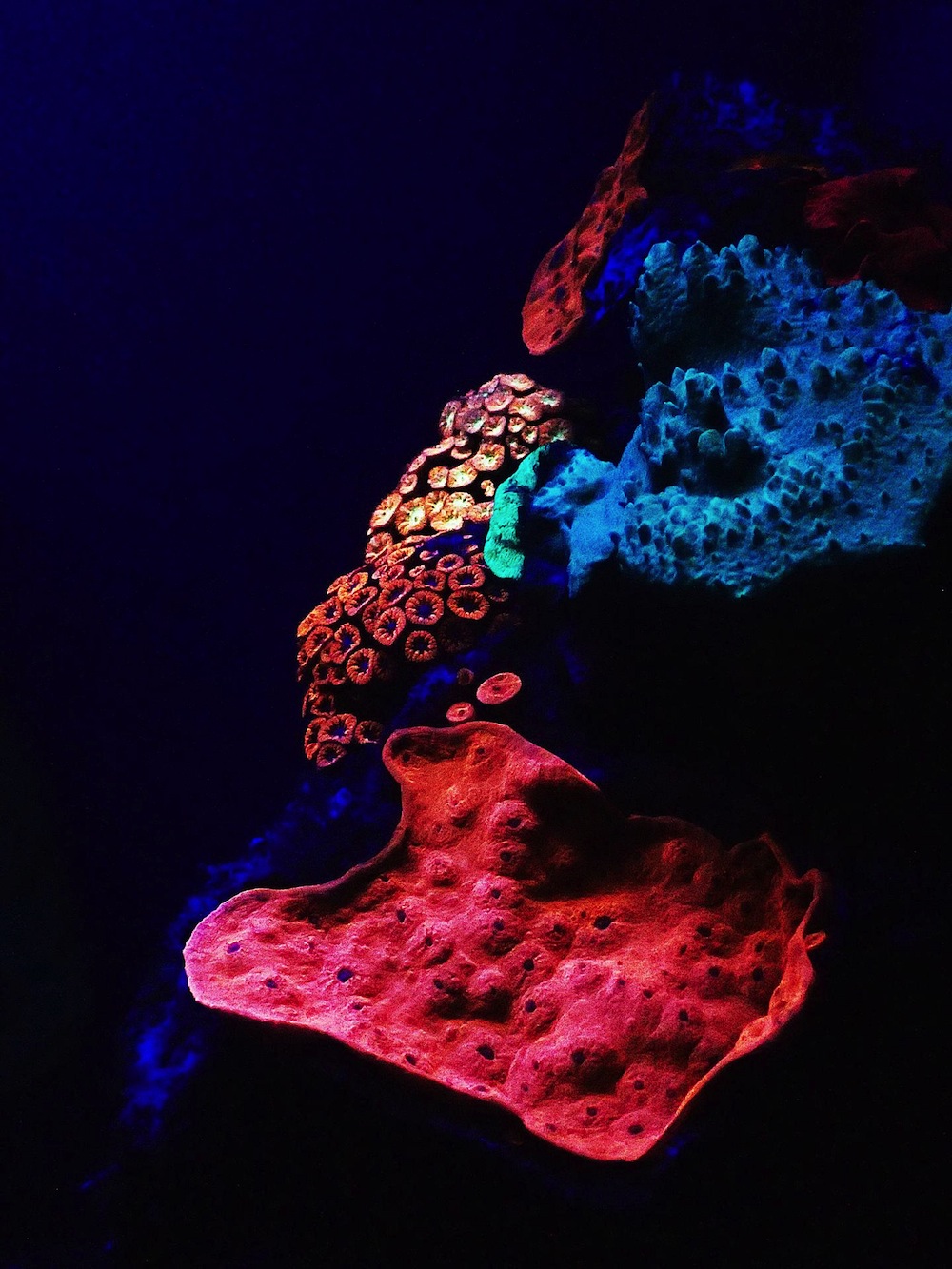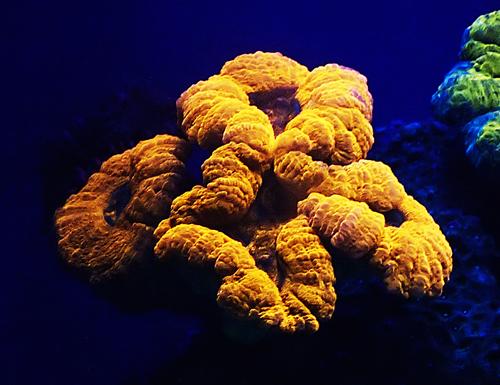Red Sea's Glowing Corals are Rainbow of Colors

Deep in the Red Sea, beyond the reach of most scuba divers, coral reefs are putting on a glowing, colorful show, scientists have discovered.
Researchers found the radiant corals more than 160 feet (50 meters) below the surface of the Red Sea, which separates Africa from the Arabian Peninsula. At these depths, corals stay mostly in the dark. Yet, despite their limited exposure to light, they glow brightly in fluorescent yellow, fiery orange, forest green and mustard yellow, in researchers' photographs. These luminous rainbow-colored corals could be used to develop new tools for viewing microscopic objects in medical research, researchers said.
The corals' glow comes from fluorescent pigments, noted study co-author Jörg Wiedenmann, a professor of biological oceanography at the University of Southampton in the United Kingdom. [Take a video tour of the Red Sea's glowing corals]
"These fluorescent pigments are proteins," Wiedenmann said in a statement. "When they are illuminated with blue or ultraviolet light, they give back light of longer wavelengths, such as reds or greens."

Corals that live at depths of between 100 feet and 330 feet (30 to 100 m) are called mesophotic corals because of the limited amount of light that reaches them. The word "mesophotic" translates to "meso" for "middle" and "photic" for "light." There are limited data on their distribution, quantities and way of life. Typically, special equipment — such as autonomous underwater vehicles and remotely operated submarines — is needed to access the reefs.
"Advances in technical diving have enabled us to explore coral communities from these deep waters," said study lead author Gal Eyal, a Ph.D. candidate in the zoology department at Tel-Aviv University in Israel.
"Since only the blue parts of the sunlight penetrate to depths greater than 50 metres [164 feet], we were not expecting to see any red coloration around," Eyal said in a statement. "To our surprise, we found a number of corals showing an intense green or orange glow. This could only be due to the presence of fluorescent pigments."
Sign up for the Live Science daily newsletter now
Get the world’s most fascinating discoveries delivered straight to your inbox.
Colorful corals are most often associated with shallow waters — the amount of sunlight they receive determines how much pigment they produce. In deeper waters, however, some corals can produce pigment independently from the amount of sunlight that manages to penetrate their habitat, according to researchers. These corals can switch from their natural green tinge to a mature red color without light.
The researchers suggest that the fluorescent pigments in the corals fulfill a specific biological function, though the specifics are unknown. The fluorescent pigment is what makes the corals especially useful for developing advanced medical imaging tools, the researchers said.
For instance, in lab experiments, the corals' florescent proteins could attach to specific living cells and track their movement. Red fluorescent proteins, which emit longer-wavelength light, are easier to detect because they can more easily penetrate cells, according to the study.
"Their optical properties potentially make them important tools for biomedical imaging applications, as their fluorescent glow can be used to highlight living cells or cellular structures of interest under the microscope, Wiedenmann said. "They could also be applied to track cancer cells or as tools to screen for new drugs."
The detailed findings were published Wednesday (June 24) in the journal PLOS One.
Elizabeth Goldbaum is on Twitter. Follow Live Science @livescience, Facebook & Google+. Original article on Live Science











